
The mesmerizing Feeling of meditation
The Self cannot be attained by the study of the Vedas, not by intelligence nor by much hearing. Only by him who seeks to know the Self can it be attained. To him the Self reveals its own nature. Katha Upanishad, 1.2.23 (9) 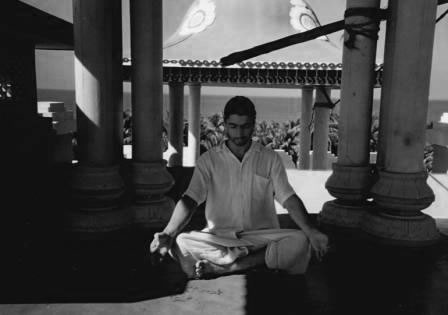
“Meditation has been laid stress upon by all religions. The meditative state of mind is declared by the Yogis to be the highest state in which the mind exists. When the mind is studying the external object, it gets identified with it, losing itself in it. To use the simile of the old Indian philosopher: the soul of a man is like a piece of crystal, but it takes the color of whatever is near it. Whatever the soul touches … it reflects that color. That is the difficulty that constitutes the bondage. The color is so strong, the crystal forgets itself and identifies itself with the colour. Suppose a red flower is near the crystal and the crystal reflects this color and forgets itself, then it believes it is red. We in the other hand have taken the color of the body and have forgotten what we are. All the difficulties that follow come from that one dead body. All our fears, all worries, anxieties, troubles, mistakes, weaknesses, evil, are from that one great blunder — that we are bodies. This is the ordinary person. It is the person taking the color of the flower near to it. We are no more bodies than the crystal is the red flower. “The practice of meditation is pursued. The crystal knows what it is, takes its own color. It is meditation that brings us nearer to truth than anything else. …” Swami Vivekananda

Meditation the way to TURIYATITA
The Vedas teach us that there are three intrinsic traits (called gunas) in each creature, whether they are humans or animals: Sattva (Purity), Rajas (Activity) and Tamas (Inertia). One or a combination of these qualities influences each individual. We can affect these traits by a correct diet, breathing, meditation and perhaps by using some specific ayurvedic herbal concoctions. Meditation is a profound an endless stream of continuous contemplation. Meditation is “being” just being, it’s an approach to life throughout which one attempts to go ahead and fracture the dividing wall that separates the conditioned mind and the spirit, enchanting the practitioner with an expanded state of unadulterated crystal clear and lucid state of consciousness, which finally will overcome the conceptual dual mind. At the foundation, the purpose of meditation is to attain an unruffled mind, but with time and persistence, we can awaken internal energies that may shake the foundations of being. At this point many unsolved emotions may rise together with a personality disassociation, which usually culminates in a complete disintegration of the ego sense. When a particular spiritual path that involves meditation is undertaken, the aspirant has to pass through five different curious states of the mind in an apprehensive way:
- The first is the conscious state.
- Dream or sub-conscious state.
- The ‘deep-sleep state’ when the mind is in between sleeping and dreaming, here we are not usually aware of our surroundings.
- Turiya the transcendental state, somehow serene and unruffled, this state is achievable only to the one who has entirely distilled the mind and left it clear as the sky devoid of clouds and haze. Turiya is entirely run by intuition and can be experimented only in meditation or a deep contemplative state.
- The final state is Turiyatita, a mindless empty vastness. Here the sense of Self becomes obliterated by the fact that the ‘mind-space’ converts itself into thoughtless-space, the mind can’t grasp anymore the sense of “I” and dies completely. Here is the point of no return, since you become one with the source and this is irreversible and unalterable.
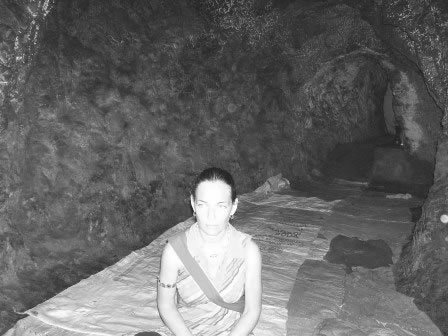
Patanjali portrays five widely divergent positions of the mind: Mudha, Ksipta, Viksipta, Ekagra and Nirodha. Ksipta: Is classified as an exceedingly restless psyche, incapable to even process thoughts in a calm way. It is like a monkey mind jumping from tree to tree. Mudha: Here few thoughts appear to arrive at the intellect; the subject is inattentive, absent, and dull. Viksipta: Here the mind is in an elevated location, where it obtains data. Ekagra: The person is alert only one object occupies his mind. Nirodha: When erratic thoughts are not present any longer and when the mind is in every aspect alert, aware and in the present moment, we can say that we have achieved Nirodha. Patanjali states that the vital objective of meditation, is the obliteration of the primitive lack of knowledge (avidya) and the comprehension of the fundamental nature of the Self. To be more concise about the benefits of yoga let me try to explain the unexplainable, by describing different states of mind that you may experience while doing sadhana (practicing) in a methodical way:
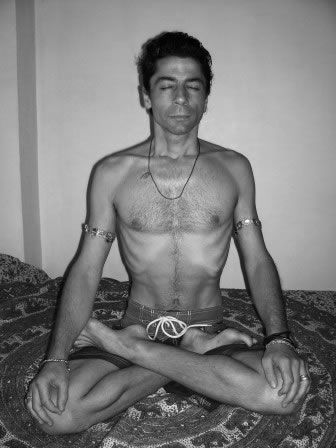
LAYAThe explanation of ‘laya’ in Upadesa Saram in Verses 11 and 13 says: “The mind becomes quiescent by regulation of breath, like a bird caught in a net. This is a form of mind restraint”. ‘Laya’ is a state of mental stillness; conversely, even though it is a high state, this is not real freedom. The mind-set in Laya, is similar to what takes place in sleep, or under excessive emotion, pressure or intense stress, where the mind switches to a different channel to protect sanity. Nevertheless, this takes place instinctively, devoid of one’s awareness or preference for the average person, but in contrast ‘Laya’ is a state that can be brought about by will while mediating, it is a pleasant event in one’s life, which can be won after deep concentration and or after a pranayama practice. In this case, it happens by using our will power. Laya can become addictive and the yogi can develop a compulsive mind set. Then Laya even though pleasant, is considered pointless, or an obstacle to the one who longs for spiritual development. The significant issue here, is that Laya is an aggressive imprisonment of the thought process. This lack of motion and thoughts, is brought about by a peripheral force, when this force is no longer present, then the mind goes back to its usual state. There is a crucial factor that we can’t forget and it is that in Laya the perceiver is absent; it is an absent-minded state, where the ego is dormant together with awareness. Existence is not conscious of itself, there still exists duality in a subtle way, almost unrecognizable. bymeditating this way, the practitioner can’t realy advance, until he realizes and correct his grave mistake. There is no transformation following laya. No matter how long laya Samadhi lasts one would always come back to normal consciousness with the last thought process that occurred preceding laya. Ramana Maharshi says that by comprehending the nature of ‘laya’ one should endeavor to transcend it, and to not let oneself to be overtaken by such enchantments of serenity. “As soon as one experiences this, revive awareness and enquire within as to whom this experience of stillness is happening”.

Samadhi’s
Evidently, self-consciousness is related to the individual himself and therefore has to be experienced in his being, with a centre in the body as the center of experience. It resembles the dynamo of a machine, which gives augmentation to all sorts of electrical works. Not only does it maintain the life of the body and the activities of all its parts and organs, but also the relation between the physical and the subtler planes, on which the individual functions. Also, like the dynamo, it vibrates and can be felt by the calm mind that pays attention to it. It’s known to the yogis and sadhakas by the name of sphurana, which in samadhi scintillates with consciousness. (Ramana Maharshi, GR, 82.)
We could simplify all samadhi stages and say that Samadhi’s are only of two kinds, Samprajnata or sabija (with seed) and Asamprajnata or nirbija (seedless). In Samprajnata, the seeds of Samskaras are not shattered while in Asamprajnata the Samskaras are completely demolished. [vinaya comment: In all samadhis there are two results: knowledge of the real, and detachment from the unreal. Higher samadhi’s give higher knowledge and more subtle detachment. In nirbija Samadhi there is no seed or object of concentration. Nirbija is higher, and so burns more subtle samskaras]
The Samprajnata Samadhi The mind makes a shallow endeavor to clutch to something, a point, an axis of concentration or a deity of some sort, in other words; absorption is accomplished on conceptual gross objects and their environment, in relation to time and space. In this Samadhi, sound, meaning and knowledge are mixed up. Here the intelligence incessantly focuses on the object and becomes one with it. One loses all individual consciousness. The practitioner forgets completely himself, he does not know he exists as a separate entity, a human being. The notion of time and space is in general unusual, he is entirely in a different cosmos. Here there are no desires at all, all concepts dissolve. There still are thoughts approaching from diverse places but he is unaltered by them. Samprajnata Samadhi divides in four branches, Savitarka, Savichara, Sananda and Sasmita Samadhi.
Sananda Samadhi or the Blissful Samadhi
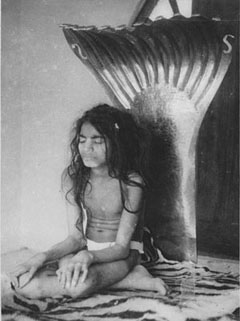
In this Samadhi the unpleasant gross matter and its elements are eradicated from the field of individual consciousness. The mediator focuses his power of concentration on the Sattvic unperturbed expanded mind itself, at this point arises in the mediator an uncharacteristic insight of passionate elation. Nirvitakara: is accomplished when meditation is done on the elements outside but unrelated to time and space, while the power of questioning, analysis, judgment, or argumentation is absent. This is a very delicate and refined form of Samadhi.
Sasmita Samadhi
Meditation is done on the mind itself. It confers the comprehension of the perceiver of all incidents in the field of life, while in the world of appearances. The Self turns its gaze so to speak to know itself. The ego remains as a dormant vestige. The mediator looses sense of his gross body and personality traits. This Samadhi guides the mediator to the origin of all, itilustrates the way to freedom. The practitioner feels Asmi or I am, other than the physical body. Dispassion and insouciance, are the main characteristic of this Samadhi.
Asamprajnata Samadhi
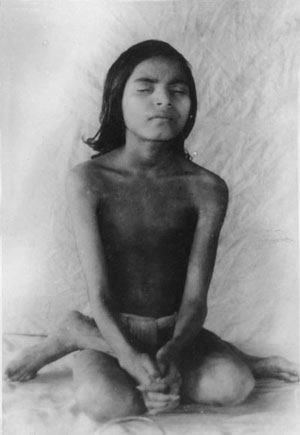
Known otherwise as Nirbija or Nirvikalpa Samadhi. In this Samadhi all the karmas and impressions are scorched by the blazing flames of knowledge, it brings about unlimited sovereignty. This is the zenith, the pinnacle of life’s purpose, the transcendental splendor of the Self and free will are enjoyed. Linear time is reinstated by a sense of mesmerizing Eternity. The five burdens of life, Avidya (ignorance), Asmita (egoism), Raga-dvesha (love and hatred) and Abhinivesha (clinging to life) are shattered. There is a complete evaporation of the ego sense together with its attributes, lack of knowledge, egoism, etc. In the Asamprajnata Samadhi, the alterations of the mind are absolutely self-possessed and all the remaining mental impressions are annihilated; there are no ideas or opinions at all. The perceiver and the perceived are one; he is in every aspect serene. Nirvakalpa lingers from a few hours to many days, and it is said that if you are engaged in nirvikalpa Samadhi for more than 21 days the soul will depart the physical frame to enter the last state, Maha Samadhi and never return, but usually everybody comes down from it, to share their energy and experiences with everyone else. Typically after this compelling occurrence, one utterly fails to remember his own name, gender, age, nationality, etcetera, we cannot verbalize our feelings or converse with others, it takes time to recover. There were some yogis in the past, that did not return, but opened their eyes and tried to connect back to this world. They did not pass away, however they sustained their high climax samadhi and found it unfeasible to cross the threshold to the material universe and act like ordinary human beings. It is impossible to function in the physical world, while in that condition of heightened awareness. When one pierces through and reaches nirvikalpa samadhi, habitually one does not desire to return into normal consciousness.
DHARMA-MEGHA-SAMADHI
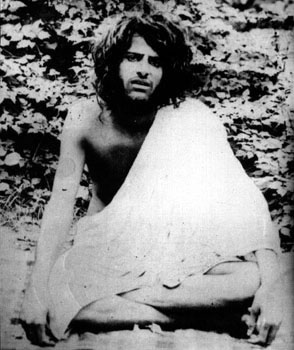
DHARMAMEGA: “Cloud of Dharma” this samadhi encloses and includes all that can be known. Just as a cloud fills the heavens and with its rain quenches all thirst and soothes all dryness, this Samadhi expands as a mist through consciousness in an enlightening way. The only reference to dharma-megha-samadhi in classical Hindu literature is in Vidyara nyas Pancada si. In I, 60 he points out that dharma-megha-samadhi is the uppermost phase to arrive at in Yoga. He says that Samadhi is: “That state in which the mind progressively discards the concept of mediator and meditation” The gap linking dharma-megha-samadhi with kaivalya is basically indiscernible, it can be assumed that they are one and identical, or just one is a prolongation of the other as a same indissoluble spring.
KAIVALYA: could be translated in many ways but the closest we can get in English is: unlimited oneness, faultless disinterest, sovereignty.” It’s in other words the state of absolute dettachment, it’s the astonishing transcendental state. kaivalya, is the ultimate liberation, here there is no struggle, no escape or repression of emotion and feelings. [vinaya comment: dharma-megha Samadhi is described by Patanjali: cloud bearing dharma Samadhi. For Patanjali (and esp. BabaHariDass commentary on it) the stages of Samadhi are all connected together. After sasmita comes asampranjta Samadhi of various forms, then viveka kheyati (ultimate discrimination between the real and unreal (prakriti and purush), this is the point of no return. For all previous samadhi’s it is possible for the sadhak to become attached and fall back to earlier stages, but after viveka kyeyati the samskaras are burned. Dharma-megha Samadhi is next in line, and finally kaivalya, a non-dual state of complete isolation and liberation.]
Sahaja Samadhi

Ramana Maharshi describes his sahaja Samadhi experience in the following words: “It was in 1896, about 6 weeks before I left Madurai for good (to go to Tiruvannamalai – Arunachala) that this great change in my life took place. I was sitting alone in a room on the first floor of my uncle’s house. I seldom had any sickness and on that day there was nothing wrong with my health, but a sudden violent fear of death overtook me. There was nothing in my state of health to account for it nor was there any urge in me to find out whether there was any account for the fear. I just felt I was going to die and began thinking what to do about it. It did not occur to me to consult a doctor or any elders or friends. I felt I had to solve the problem myself then and there. The shock of the fear of death drove my mind inwards and I said to myself mentally, without actually framing the words: ‘Now death has come; what does it mean? What is it that is dying? This body dies.’ And at once I dramatized the occurrence of death. I lay with my limbs stretched out still as though rigor mortishas set in, and imitated a corpse so as to give greater reality to the enquiry. I held my breath and kept my lips tightly closed so that no sound could escape, and that neither the word ‘I’ nor any word could be uttered. ‘Well then,’ I said to myself, ‘this body is dead. It will be carried stiff to the burning ground and there burned and reduced to ashes. But with the death of the body, am I dead? Is the body I? It is silent and inert, but I feel the full force of my personality and even the voice of I within me, apart from it. So I am the Spirit transcending the body. The body dies but the spirit transcending it cannot be touched by death. That means I am the deathless Spirit.’ All this was not dull thought; it flashed through me vividly as living truths, which I perceived directly almost without thought process. I was something real, the only real thing about my present state, and all the conscious activity connected with the body was centered on that I. From that moment onwards, the “I” or “Self” focused attention on itself by a powerful fascination. Fear of death vanished once and for all. The ego was lost in the flood of Self-awareness. Absorption in the Self continued unbroken from that time. Other thoughts might come and go like the various notes of music, but the “I” continued like the fundamental sruti [that which is heard] note which underlies and blends with all other notes”. In this samadhi one is in the highest state of consciousness, and simultaneously one can operate in the world in a more efficient manner. One upholds the nirvikalpa samadhi state while concurrently socializing and working in the world. One is in this state while awake sleeping or dreaming, and is employing the body as an ideal device to work in the physical plane. One acts as everyone else except that in the deepest part of his being he is flooded with celestial enlightenment. Sahaja samadhi appears merely when oneness with the absolute is constant and unbroken. The Vaishnava Bhakti Schools on the other hand describe Samadhi as an absolute absorption into an object of devotion, a deity in this case. They believe that instead of thinking of “nothing,” (nothing being nothing else that a conceptual thought) a proper samadhi is supposed to be accomplish through uncontaminated, unadulterated love of God. In this way samadhi can be accomplished through meditation on the form of God.
Samadhi after death
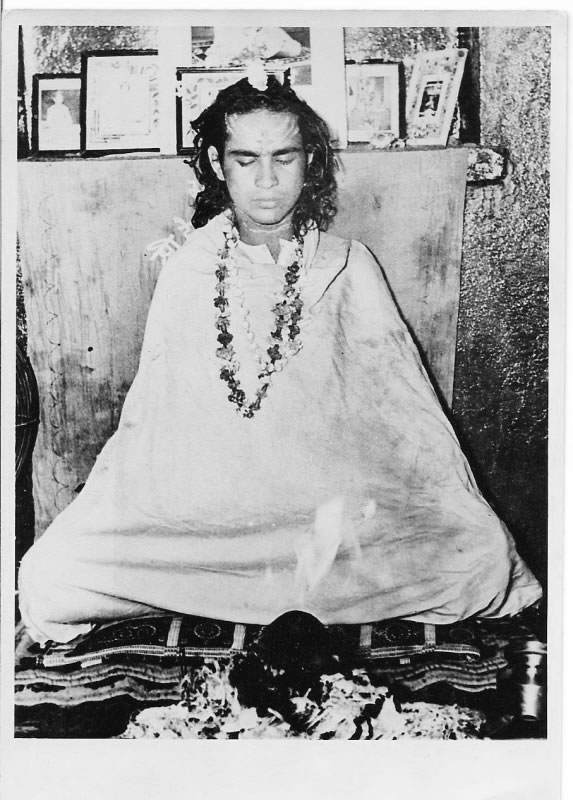
It is said that sophisticated yogis, intentionally can leave their bodies as an ultimate accomplishment. It is at this moment in time, that the essence of being knows himself to be the whole, and by being liberated from all body restrictions, he merges perfectly into the awe-inspiring and luminous eternity. The personage rises above the worlds, far from karma and returns to vastness, assimilating transcendental Bliss forever.